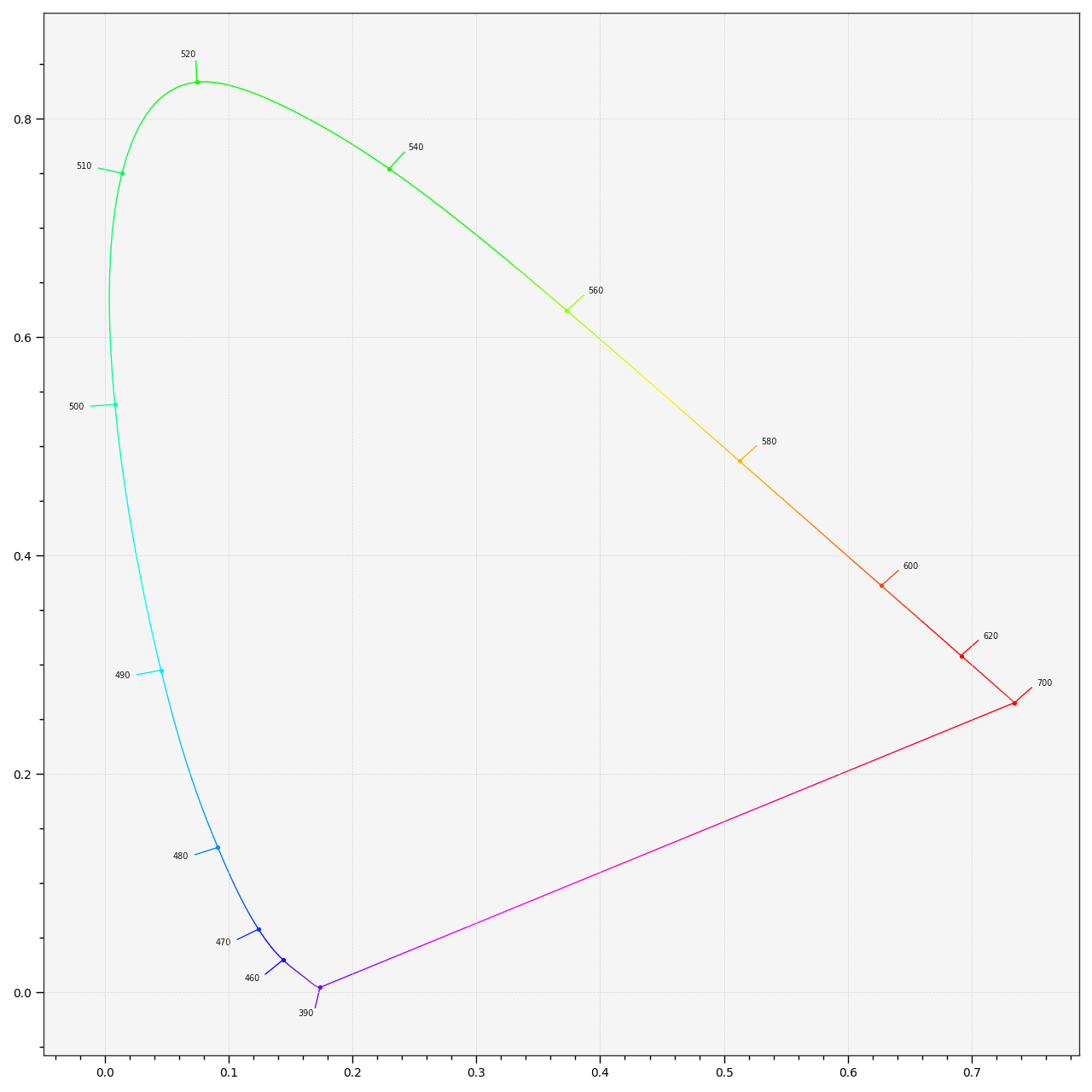colour.plotting.diagrams.plot_spectral_locus#
- colour.plotting.diagrams.plot_spectral_locus(cmfs: MultiSpectralDistributions | str | Sequence[MultiSpectralDistributions | str] = 'CIE 1931 2 Degree Standard Observer', spectral_locus_colours: ArrayLike | str | None = None, spectral_locus_opacity: float = 1, spectral_locus_labels: Sequence | None = None, method: Literal['CIE 1931', 'CIE 1960 UCS', 'CIE 1976 UCS'] | str = 'CIE 1931', **kwargs: Any) Tuple[Figure, Axes][source]#
Plot the Spectral Locus according to given method.
- Parameters:
cmfs (MultiSpectralDistributions | str | Sequence[MultiSpectralDistributions | str]) – Standard observer colour matching functions used for computing the spectral locus boundaries.
cmfscan be of any type or form supported by thecolour.plotting.common.filter_cmfs()definition.spectral_locus_colours (ArrayLike | str | None) – Colours of the Spectral Locus, if
spectral_locus_coloursis set to RGB, the colours will be computed according to the corresponding chromaticity coordinates.spectral_locus_opacity (float) – Opacity of the Spectral Locus.
spectral_locus_labels (Sequence | None) – Array of wavelength labels used to customise which labels will be drawn around the spectral locus. Passing an empty array will result in no wavelength labels being drawn.
method (Literal['CIE 1931', 'CIE 1960 UCS', 'CIE 1976 UCS'] | str) – Chromaticity Diagram method.
kwargs (Any) – {
colour.plotting.artist(),colour.plotting.render()}, See the documentation of the previously listed definitions.
- Returns:
Current figure and axes.
- Return type:
Examples
>>> plot_spectral_locus(spectral_locus_colours="RGB") (<Figure size ... with 1 Axes>, <...Axes...>)
